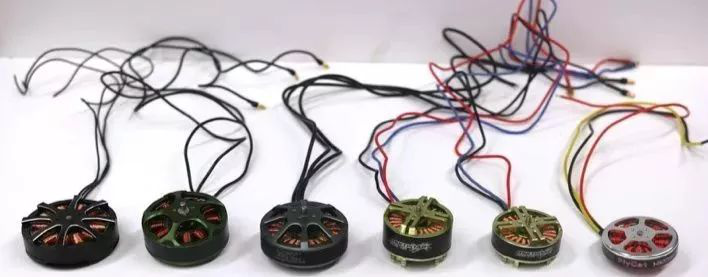“Nowadays, various types of drones and robots are widely used. The characteristics of small size, light weight and fast speed of brushless motors can be said to be very suitable for drones. In this article, we will introduce why brushless motors are more suitable for unmanned aerial vehicles. man-machine.
“

First: Why choose a brushless motor?
reliability
DJI’s drones basically choose brushless motors. For brushed motors, more than 90% of the faults are caused by the carbon brushes, which is determined by the design itself. Dust, rust, vibration, etc. may cause poor contact and cause problems.
long life
The carbon brushes of brushed motors will wear out and need to be updated regularly. For the civilian product industry, this is obviously unrealistic; brushless motors have no such concerns at all, and are almost maintenance-free.
efficient
The high efficiency here refers to the conversion rate of energy. The brushless motor has no contact resistance and no heating elements such as carbon brushes. The utilization rate of electric energy is high, which can be as high as 90%; while the brushed motor can only reach 75%, so the brushless motor There will be obvious advantages in the running time of the motor
heat dissipation
Since a large part of the electric energy is converted into heat energy, the brushed motor must be designed accordingly. This will affect the volume of the product and increase the weight of the product, which is not feasible for drones or robots.
control precision
According to the general concept, the control precision of the brushed DC motor is high. But we have to look at things dynamically and dialectically. With the popularization of Hall sensors, which are perfectly matched with brushless motors, the problem of accuracy has been solved.
Second: How does the brushless motor measure the speed?
1. Hall effect principle speed measurement method
The rotating shaft of the brushless motor drives the magnetic steel on the shaft to rotate, thereby changing the size of the magnetic field. The change of the magnetic field is converted into a pulse signal through the Hall circuit, which is amplified and shaped to output a rectangular pulse signal. When the rotational speed changes, the frequency of the output pulse will change. Thereby, the speed of rotation of the DC geared motor is obtained.
2. Photoelectric speed measurement method
A tachometer system is formed using grid discs and photogates. When the brushless motor drives the grid disc to rotate through the transmission part, the speed measuring photogate obtains a series of pulse signals. These pulse signals are coordinated by two timers/counters of the microcontroller, one for counting and one for timing. Calculate the number of pulses m per unit time, and after unit conversion, you can calculate the rotational speed of the motor.
Third: the connection between the motor and the ESC
The Speed Controller that controls the speed of the motor. A long time ago, the early speed controller was realized by using the steering gear to control the adjustable resistance paddle. This type of speed controller is called a mechanical speed controller. It has now retired from the historical stage and can only be used in You can see photos of it on some replica frame boxes or manuals. Now when we talk about the governor, we all refer to the Electronic governor, abbreviated as ESC (Electronic Speed Controller). According to the classification, the motor can be divided into brush power and brushless power. That is, a brushed ESC with a brushed motor, and a brushless ESC with a brushless motor.
Brushed ESCs are used with brushed motors. Brushed ESCs often have only 4 wires, 2 of which are the input power terminals, which are connected to the positive and negative poles. The other two are the output terminals that control the speed of the motor and are connected to the two electrodes of the motor. The speed and forward and reverse control can be achieved by changing the current/voltage and conduction direction.
The brushless ESC is the same as the brushed one. If the brushless motor needs to work, it will definitely need a brushless ESC. As shown in the figure below, the motor and the ESC are connected by two bundles of wires. The red, yellow, and black wires are the power wires. The ESC transmits the alternating electrical energy to the motor to drive the motor to rotate; the black flat wires are the signal wires, which transmit the speed signal detected by the Hall sensor. , passed to the ESC.
The Links: PM100CSD120 HSD150SX84 LCD-DISPLAY

0 Comments for “What kind of motor is more suitable for drone applications?”